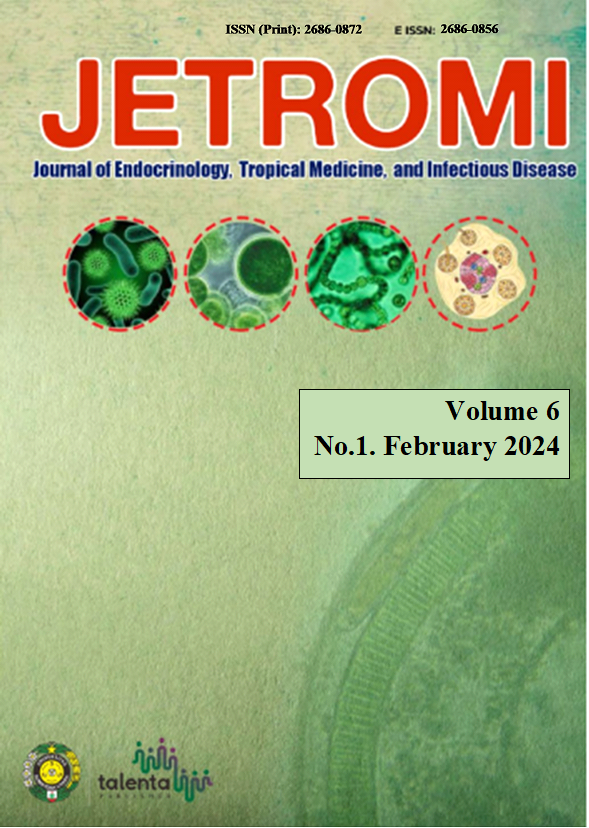Prevalence of Cockroach Density, Gastrointestinal Disorders, and Identification of Parasites in Cockroaches in Helvetia Deli Serdang Village
DOI:
https://doi.org/10.32734/jetromi.v6i1.14224Keywords:
Cockroach Density, Gastrointestinal Disorders, Vectors, Intestinal ParasitesAbstract
Background. Cockroaches are known to be vectors of various pathogens that can infect humans, one of which is intestinal parasites. Parasitic infectious diseases can cause symptoms of gastrointestinal disorders in sufferers, which can interfere with the sufferer's quality of life. This research aims to determine cockroach density, and gastrointestinal disorders in the community, and identify parasites in cockroaches.                                                         Â
Method. The research method used in this research is observational analytics. The population and sample for this study were the houses of the Helvetia Deli Serdang Village community which met the slum criteria of 100 houses. The caught cockroaches are then examined in the laboratory.
Results. The results obtained were that 96 houses (96%) were not infested with cockroaches, 4 houses (4%) had no cockroaches, and no houses were infested with cockroaches. The number of respondents who had experienced gastrointestinal disorders was 41 respondents (41%) and 59 respondents (59%) had never experienced them. Based on laboratory examination, 22 rhabditiform hookworm larvae (21.78%), 5 hookworm eggs (4.95%), and 1 Oxyruris vermicularis egg (0.99%) were found. Toxocara sp. as many as 1 piece (0.99%), and cysts Entamoeba histolytica as much as 1 piece (0.99%).
Conclusion. Based on these results, there was no high density of cockroaches found at the research location, the majority of respondents had never experienced gastrointestinal disorders in the past year, and parasites were found in cockroaches.
Downloads
Downloads
Published
Issue
Section
License
Copyright (c) 2024 Journal of Endocrinology, Tropical Medicine, and Infectious Disease (JETROMI)

This work is licensed under a Creative Commons Attribution-NonCommercial-ShareAlike 4.0 International License.
The Authors submitting a manuscript do so on the understanding that if accepted for publication, copyright of the article shall be assigned to Journal of Endocrinology, Tropical Medicine and Infectious Diseases (JETROMI).
Copyright encompasses exclusive rights to reproduce and deliver the article in all form and media. The reproduction of any part of this journal, its storage in databases and its transmission by any form or media, will be allowed only with a written permission from Journal of Endocrinology, Tropical Medicine and Infectious Diseases (JETROMI).








